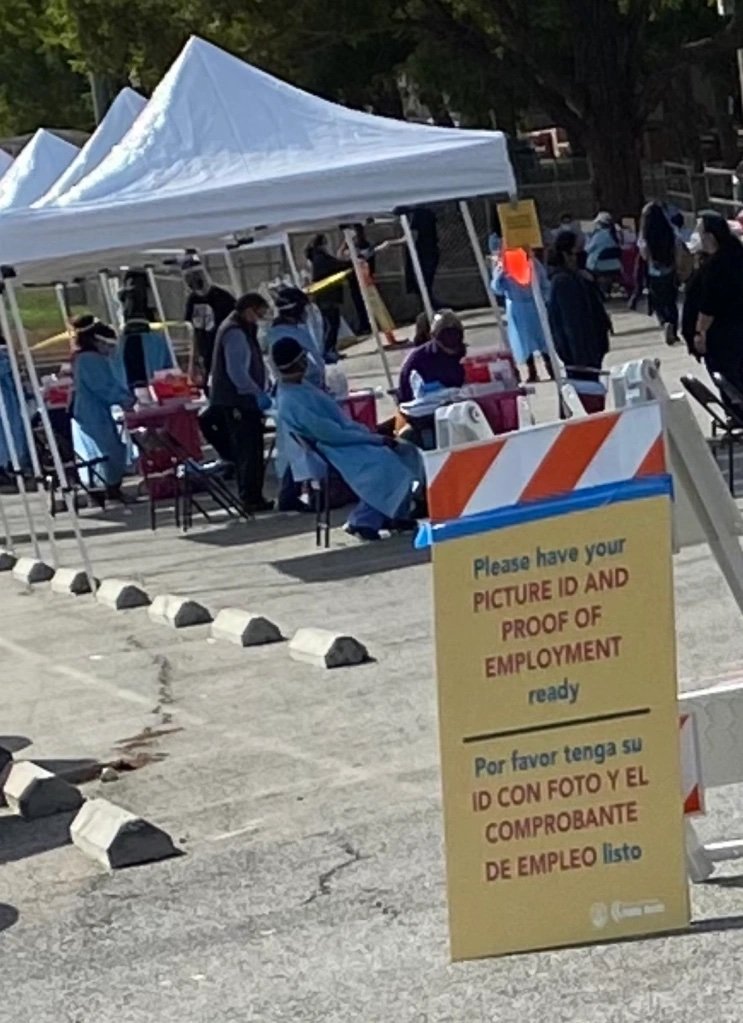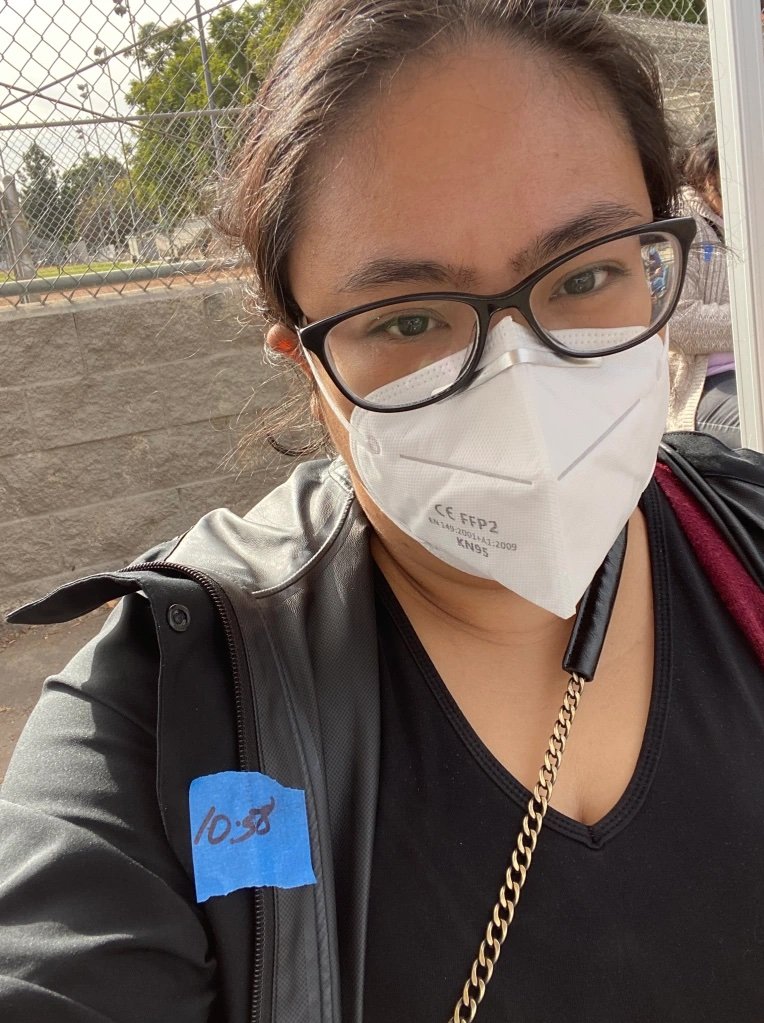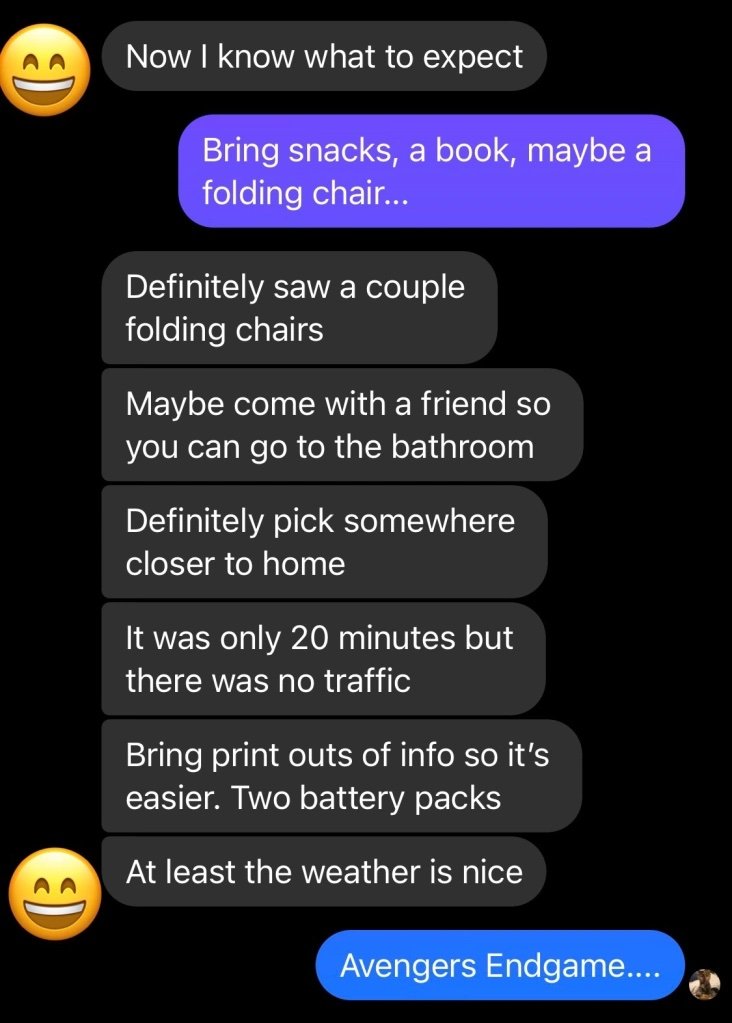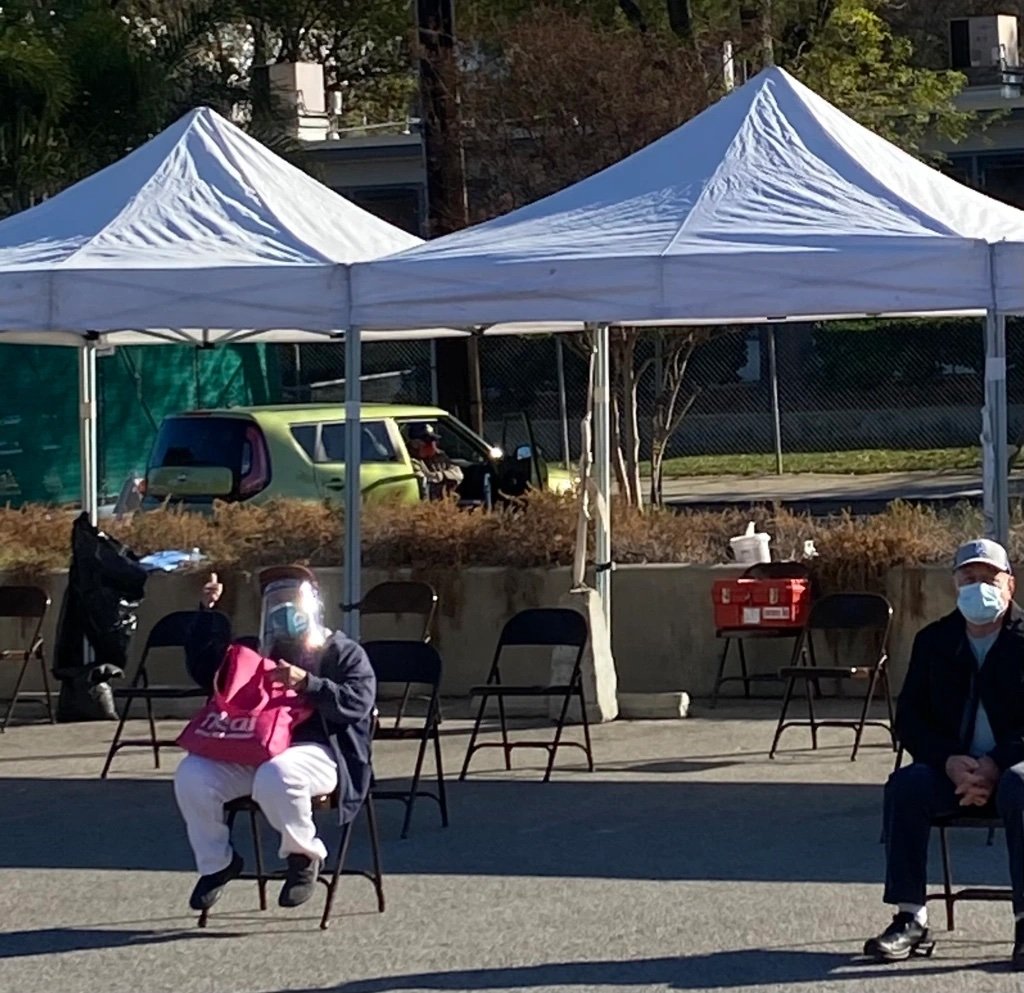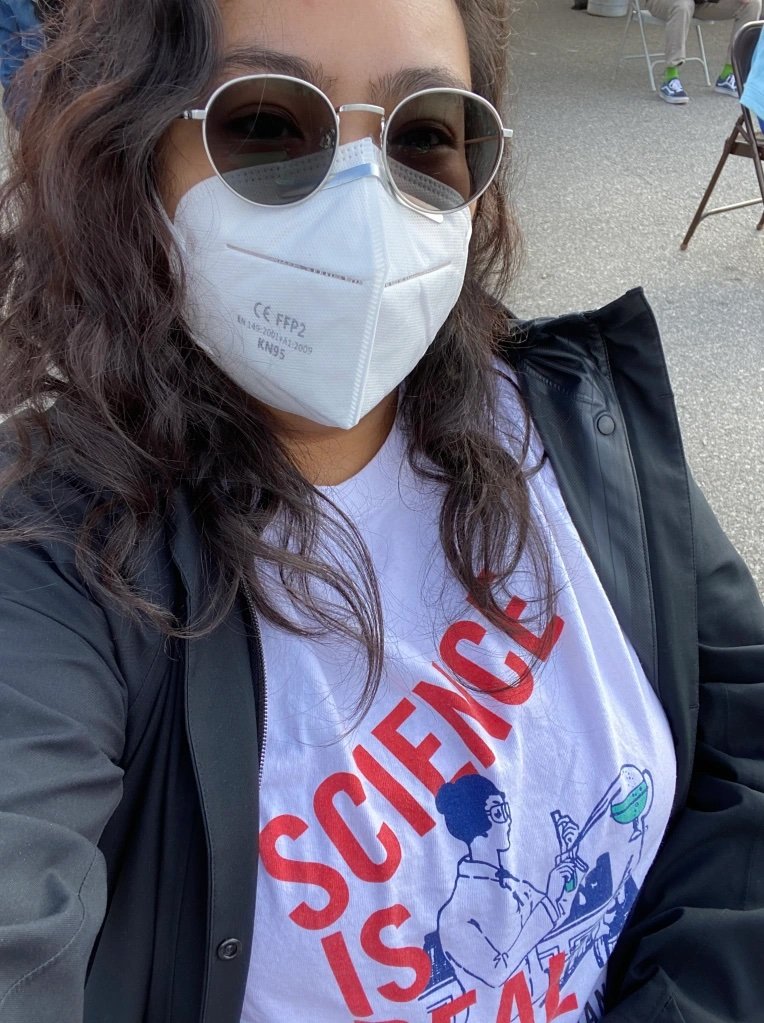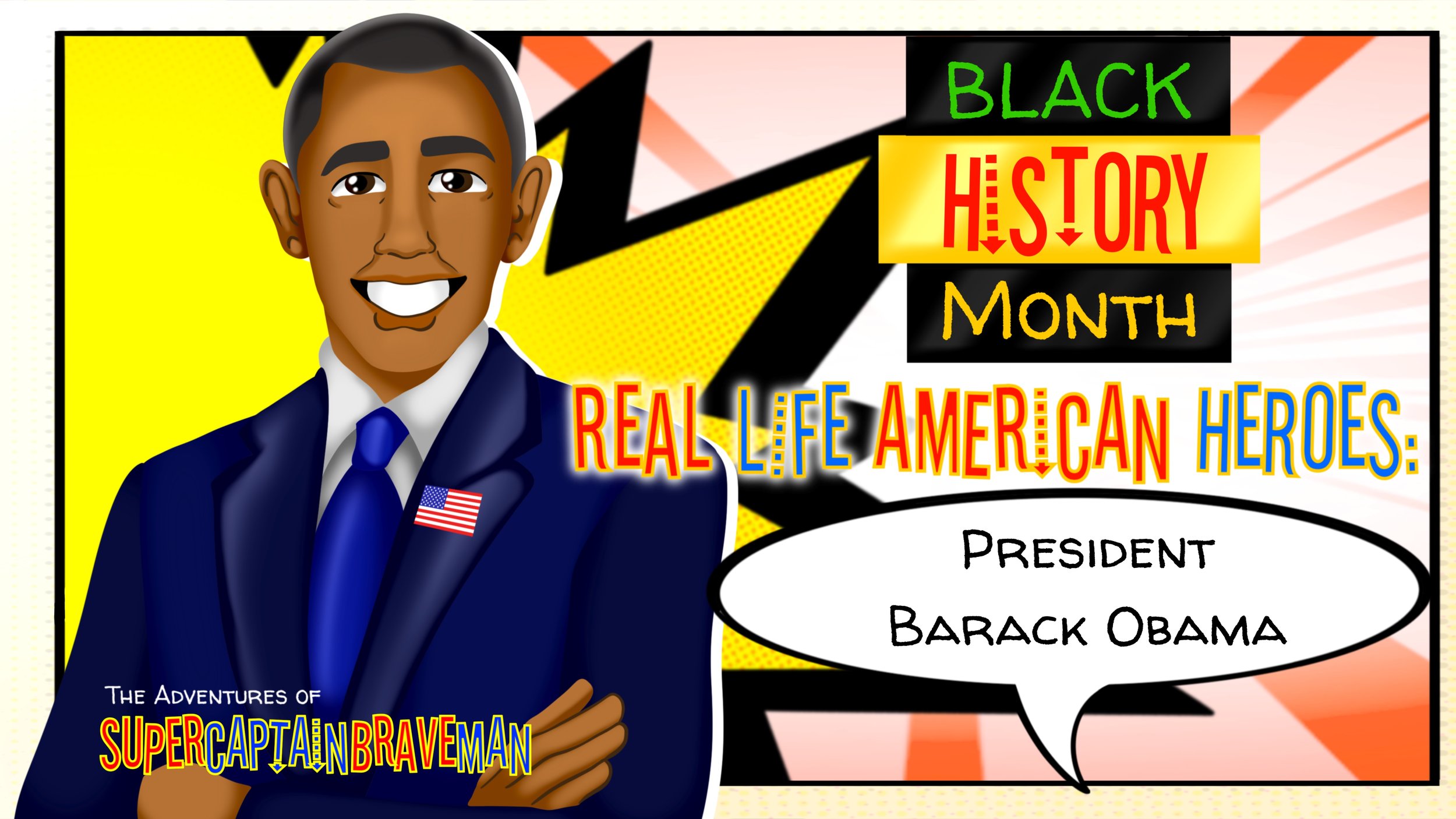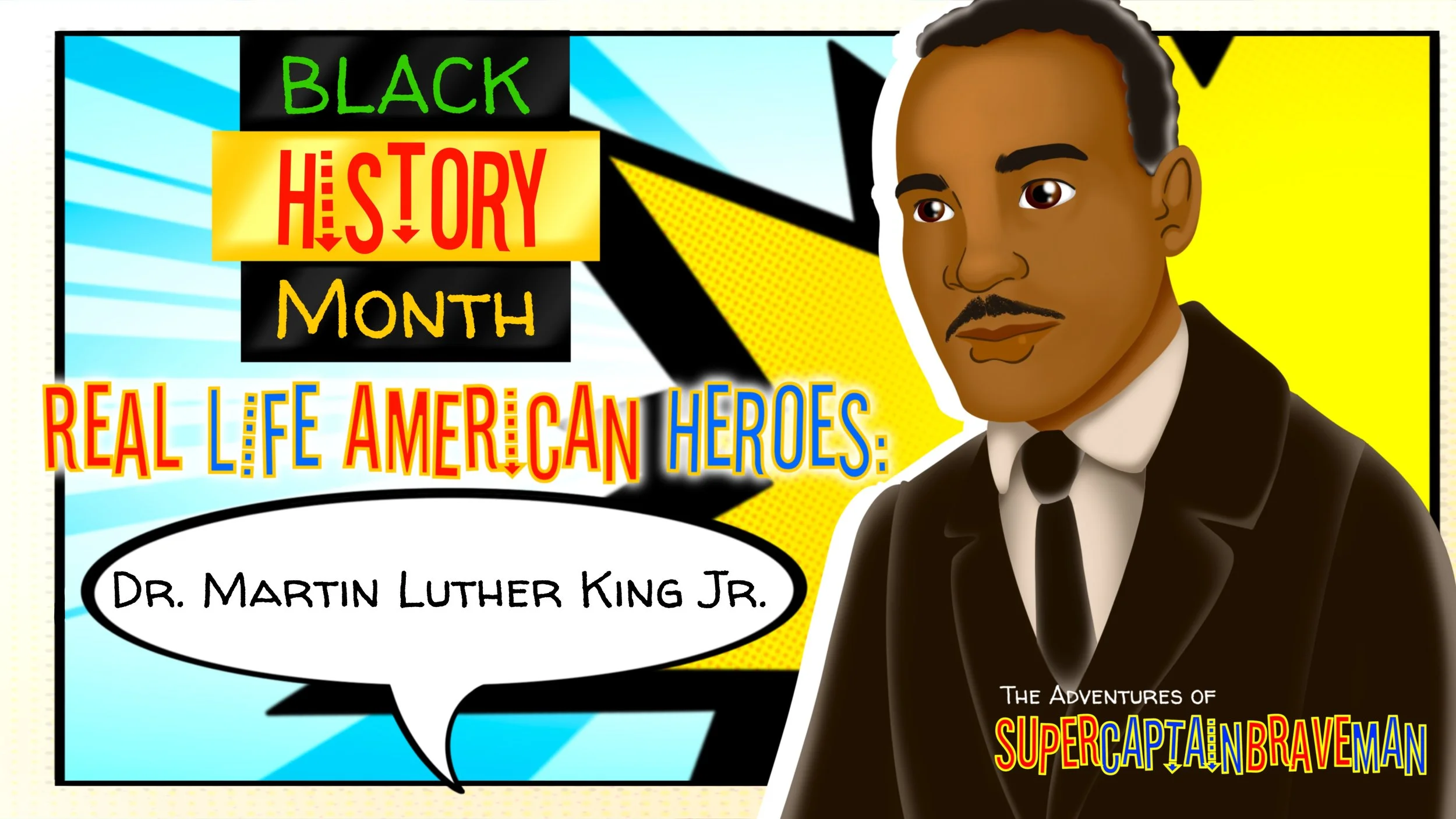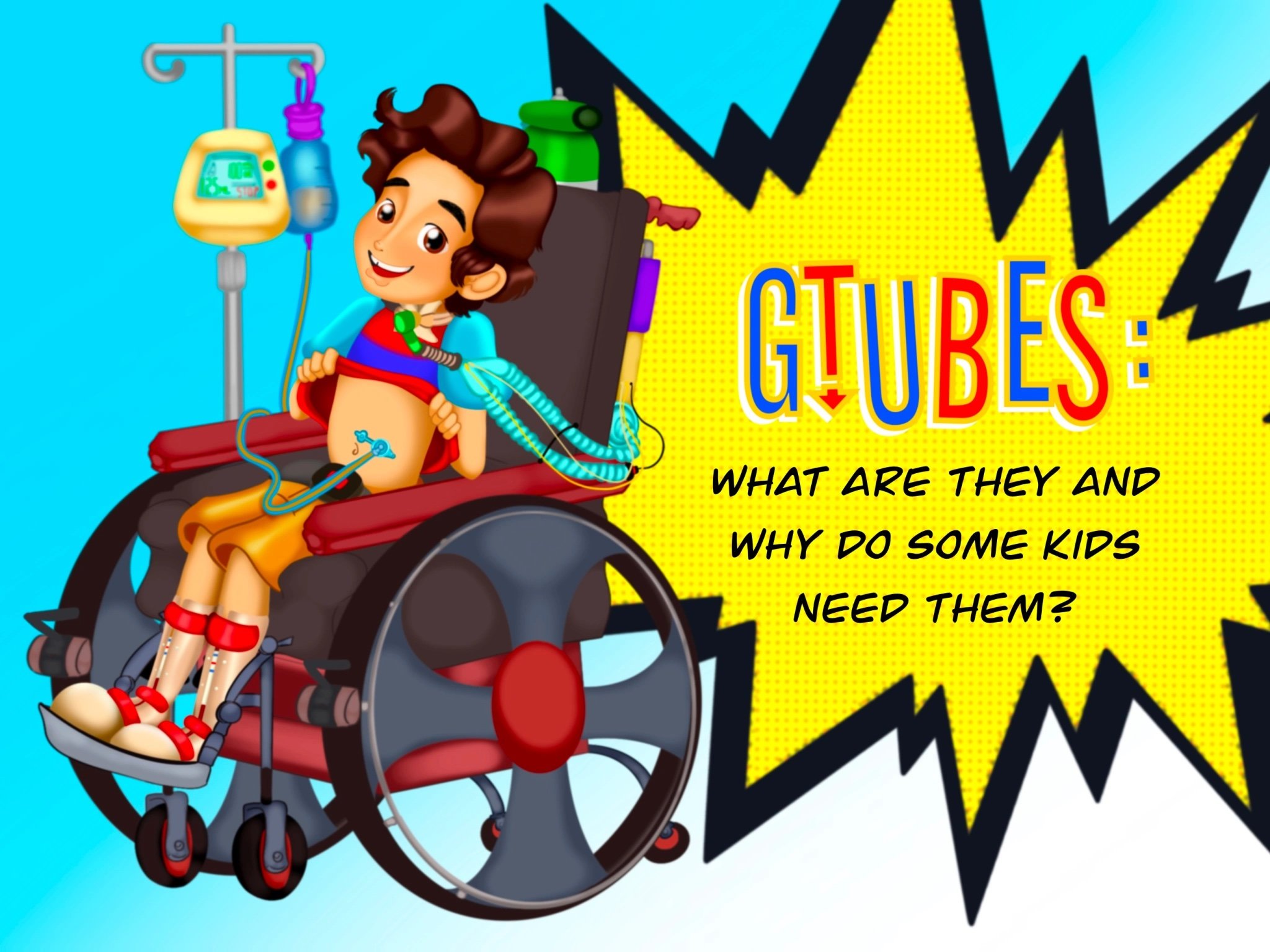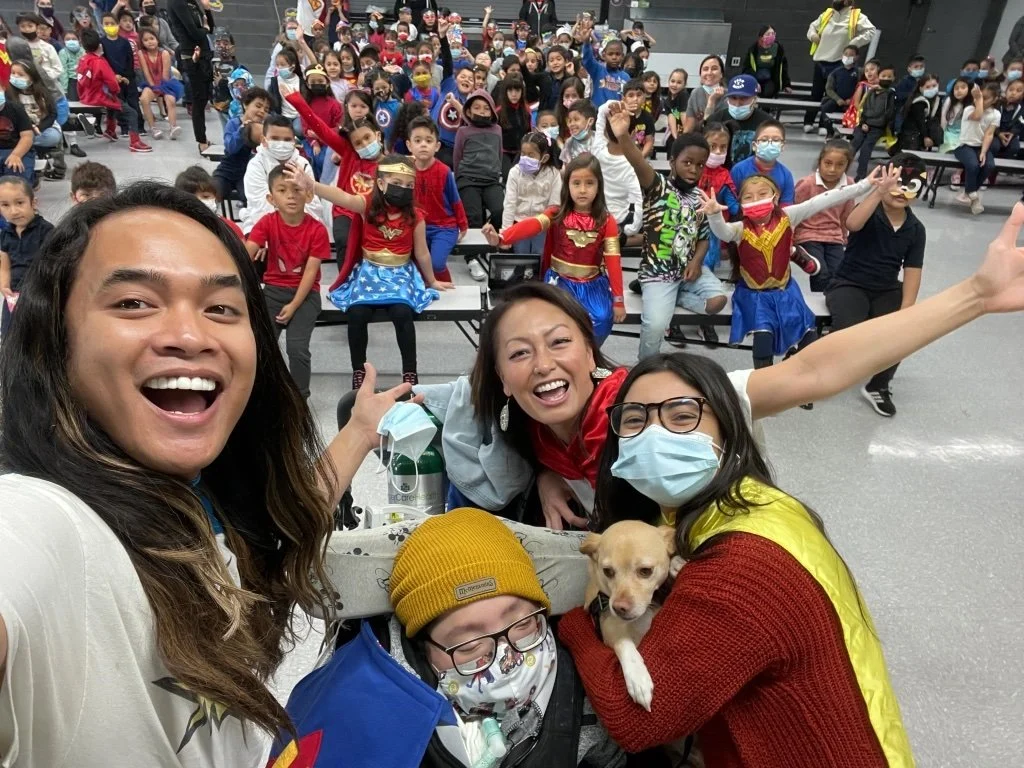I Got the COVID-19 Vaccine: Part 2
/Hello, SuperCaptainBraveFAM!
Nurse Leah here with part 2 of my vaccine journey.
On February 4th, I wrote a lot about the Moderna and Pfizer vaccines for COVID-19. Hopefully, it wasn’t too much of an information dump and answered some questions you might have had. Now that most of the technical stuff is out of the way, I can talk about my personal experiences with getting the vaccine.
Vaccine distribution set up, January 7, 2021
My main job is for a home healthcare company. This means that normally I go to my patients’ homes for anywhere between a 30-minute visit to a 12-hour shift. Traveling through the city is involved as well as direct patient contact. I was careful at maintaining a clean and sanitized work ethic before. Now, like many others, I’m almost over-zealous about it.
My vaccine story actually starts in the middle. In the middle of winter, in the middle of the multi-tier vaccination eligibility requirements created by the state of California, in the middle of a transition of leadership, and in the middle of my breakfast.
My job being what it is, I knew that even as a healthcare worker, I wouldn’t be eligible for either vaccine for a while. Frontline workers at hospitals deserve the vaccines first. So, I was surprised when I received an email from work with a link to make an appointment with the LA Department of Public Health for the first dose of the COVID-19 vaccine.
At the time of writing, if you visit the LA Department of Public Health website you can find links outlining the current tier system and eligibility requirements for vaccine distribution. There is also a link to schedule an appointment if you meet the requirements.
I made my appointment for 9:55 am on January 7, 2021.
Scheduling the first dose was pretty easy. I chose a site near my house to cut down on travel time and as early an appointment as I could get. At this site the vaccine offered was the Moderna vaccine.
Ever since 7th grade, I've lived my life on Lombardi time.
“If you are five minutes early, you are already ten minutes late.”
~Vince Lombardi
So, I showed up to my 9:55 appointment at 9:15 AM.
Nurse Leah waiting in the observation area after receiving the Moderna COVID-19 vaccination.
Then had to walk a bit to get to the actual site since the GPS sent me to the wrong entrance of the building. I was instantly glad I was early because the line already went around the corner and was making its way down the street.
In early January, the vaccine wasn’t yet available to those 65 and older, so the others in line with me were fellow healthcare workers. Close to a year of practice meant that keeping a 6-foot gap between us was practically habit at this point. Which is a little sad to think about, but is our new normal.
It took about an hour and a half of waiting in line. I filled out the health form when I made the appointment and checking in was quickly done. From there it was just a matter of providing proof of employment & my ID and then I was sitting down for the shot.
The shot itself was pretty standard. Straight into my arm with me staring straight ahead. Because I absolutely hate needles and I’ve learned that looking at the process seems to make it hurt more. Maybe it does, maybe it doesn’t. But I’m still not gonna look when I get an injection or blood drawn.
The first feeling I experienced was the cold. One thing I didn’t mention in the last vaccination post is that both vaccines need to be stored at very, very cold temperatures. Then my arm felt sore very quickly, which is normal for me when I get injections in my upper arm.
I got my vaccination card, was led to an area for observation, and given a time when it was considered safe to leave. I felt okay, if a little headachy. But after 15 minutes, I was okay to go home.
Chatting with friends while in the observation area
From the moment I got there to the moment I was cleared to leave; the whole process took about 1 hour and 45 minutes. I’ve waited in lines at Disneyland that were just as long. And the payoff for this wait is definitely worth it. During the wait time I texted with some friends who were doing the same thing I was, only at different sites.
By pure coincidence, my cousin—who works at a nursing home—received the vaccine the same day at his facility. We spent the rest of the day texting back and forth on how we were doing. The texts went along the lines of this:
Me: My arm hurts.
Him: Mine too. Got a fever?
Me: Nah. Not really. You?
Him: A little one. But it’s warm in my room.
*Two hours later*
Him: I fell asleep. Kinda tired.
Me: Same. Fever?
Him: Lemme check.
Nah
Me: Gotta eat. Laters
He told me the next day that he had little to no appetite, but that could also just be one of his quirks. I honestly couldn’t stop snacking—which is one of my quirks.
Stephen Chow as Sing in Kung Fu Hustle (2004)
But my arm was very, very sore. And remained sore for the next few days.
On January 12, Operation Warp Speed—the program tasked with vaccine development and distribution—announced that the vaccine would be made available to those 65 and older.
With the transition of leadership in the country, there was a bit of confusion on where, when, and how to schedule appointments for my mother and godmother, who are 69 and 75 respectively. Both are retired registered nurses who have each dedicated close to 35 years of their lives to their patients.
In an article on the AARP website, as of January 27, vaccines are available to adults 65 and older in all but six states—with some of those states planning to start distribution in early or mid-February. And even then, some counties have different age ranges listed for vaccine eligibility. Be sure to check the guidelines not only for your state, but county as well when looking to schedule an appointment for family members.
The situation on vaccine administration is ever evolving and the LA Department of Public Health website—DPH for short—has done its best to keep up with these changes. Information can and has changed by the minute with additional sites being added (or removed) from the list. My mother and I have taken to keeping a tab open on our phone’s internet browsers and checking every hour (or every 5 minutes) on available appointments at the sites she prefers.
On Sunday, January 24, I received an excited text from my mom stating that she got an appointment at one of the vaccination Mega PODs set up by LA County. She tried to schedule another one for my godmother for the same day, but in the time it took her to make one appointment, all the available spots were taken.
That’s when I started lurking on the DPH website, constantly refreshing the page and acting as I did in the early days of online auction shopping. Wishing and hoping.
Clickin’ and hopin’; refreshin’ and watchin’
Plannin’ and checkin’ each site for a spot
To make sure my Aunt gets her shot.
Sorry there, sometimes I re-write song lyrics in my head. (I love Dusty Springfield.)
Being so glued to the scheduling website, I almost missed the page flicker and change before my eyes. Suddenly there were three available appointments at the same location where I got my first shot.
THREE available appointments.
Knowing some of my godmother’s information, I started filling out the form and ran downstairs to tell her the news. (She & my mother live with me & my daughter now that they’re retired.) Excitedly, she gave me the other necessary details. Altogether, it took about 10 minutes to fill out the form and by the time we were done, all of the appointments were taken. Again.
Only this time, she had an appointment scheduled.
It was at this moment that the three of us—my mom, my godmother, and myself—realized that we’d scheduled their shots on the same day.
At completely different sites.
Retired RN, E. Mercado (age 75) waiting in the observation area after receiving the Moderna COVID-19 vaccine
Across town from each other.
*Cue Benny Hill-esque music*
The first appointment on the schedule was for my godmother. 8:30 AM at a site close to our house. The second was for my mom at the Mega POD located at The Forum at 11:30 AM. And they only had one car available to use.
I had prior knowledge of the layout of the first vaccine site, so I gave them some advice on where to park and my godmother was second in line to get the Moderna vaccine. Once my godmother was cleared from the observation area, they drove to The Forum and my mom received the Pfizer vaccine there.
The experience of waiting for both vaccines in one day is a strange one for sure, but it might be a story that becomes a familiar one by the time spring comes around. With every passing day, news stories and online chatter about the confusion of the vaccine schedule grows. Instances like that my mother and godmother experienced may repeat itself throughout the country.
Thankfully, the controlled, nail-biting dash they went through for their first doses won’t happen for the second shots of their respective vaccines. They were both given appointments for their second dose after they received their COVID-19 Vaccination cards. And that’s one less worry for them.
Because my godmother got the Moderna vaccine, her second dose is scheduled 28 days after the first. And because my mother got the Pfizer vaccine, her second dose is scheduled 21 days after the first.
They can be more leisurely about getting the shots the second time around and I can feel a little better knowing that they are safer when they go out.
It's very important to note that if you receive the vaccine from one company, then your second dose MUST be from the same company.
And now the World Health Organization is stating that because of the burden and stress a limited supply of vaccines can cause on a country, the second dose of the vaccine can be given up to 42 days after the first. But the WHO encourages getting the second dose as close to the 21- or 28-day period originally intended by the creators of the vaccines.
But back to me.
When I scheduled my godmother's appointment, I still hadn’t received my second dose. At the time I was given my vaccine card, I was just told what time to schedule my second appointment. I wasn’t given one automatically; but told to check the DPH website when it was near the 28-day mark and make my appointment then.
Together we can limit the spread!
So, while I was refreshing the page to make appointments for the two most important women in my life, I was looking for an opening for my own appointment.
If you live in Los Angeles or San Diego county and are actively searching for vaccine opportunities, then you’ve probably noticed that California set up a scheduling website called myTurn. This is intended to help schedule vaccine appointments.
And in the first week of the website being active, it became a huge pain in my behind.
Partly because I wanted to make appointments for the elders in my family and partly because there was no option for me to make a second appointment for myself.
By day 4 of my frustration, I received an email from the LA Department of Public Health with a dedicated link to schedule my second dose of the Moderna vaccine.
They didn’t forget me after all!
Nurse Leah after the second Moderna vaccine injection
28 days after my first shot, I got my second one.
On Thursday, February 4th, I went back to the site where I got my first shot. The line looked longer from the last time, but it definitely moved faster and as I got closer to the front, I noticed several differences in the set up.
This time the number of personnel available to help people check in was doubled and there were twice as many stations administering injections. As well as a larger observation area with more seating and more people sanitizing the chairs. In addition, before entering the vaccine administration area the line branched off into two sections. One for individuals getting their first dose of the vaccine and one for those who were there for their second.
These were small, but effective changes that made getting the vaccine more streamlined. All in all, it took about an hour and 15 minutes. And 30 of those minutes were spent sitting in the observation area.
The reason I had to sit in the observation area for 30 minutes instead of the 15 minutes I sat for last time is because I have Type 2 Diabetes and that required a longer observation time. I forgot to ask if it was because this was my second shot or if more info was available now regarding the Moderna vaccine and side effects related to having Diabetes.
Once I got home, I was hit with a wave of fatigue that was stronger than any I'd felt in a long, long time. I knew that I had to eat something so that my immune system had fuel to react to the vaccine. So I ate a quick lunch and went down for a nap.
During my nap, my mom and daughter checked in on me and later told me that I was wrapped up in my blankets in a relatively warm room. When I woke up, I definitely had a fever.
Fatigue, chills, fever.
That's three of the common side effects of the COVID-19 vaccine. And three that I didn't really encounter during my first injection. Which could be taken as a sign that my immune system recognizes and is ready to fight any cell that has the SARS-CoV2 protein spike.
(Remember from the last post that SARS-CoV2 is the virus that causes COVID-19 and that the vaccines are designed to help the immune system recognize the virus by a specific protein spike on its cell surface.)
I hate getting fevers. Of all cold and flu symptoms, for me, fevers are the least tolerable. It feels like my eye sockets are on fire, my skin feels dry and hot, and once the fever breaks the clammy sweat is just...ugh.
My normal body temperature is close to 97 degrees Fahrenheit. So when my temperature rose to 101.1 degrees Fahrenheit at 1 am, I was miserable. But as miserable as I was, I am stubborn enough to let my body and immune system do their thing and ride the fever out. Until the morning, that is.
On Friday, I took some ibuprofen and started drinking sports drinks to stay hydrated. Throughout the day, I had the classic "medicine head" fog. Concentrating was difficult and remembering to eat became a bit of an issue. I could tell I was a little hungry, but there was no driving appetite.
As for my arm where I got the injection?
It was sore, but not as sore as the first time. Do you know what was sore? My neck and shoulders. I carry a lot of my stress in my shoulders and neck. I've been told this by multiple people, including my chiropractor and my mom. But this was a whole new level of tense.
I knew I had work the next day, but wasn't sure if I'd feel well enough to do so. Luckily, I work with a great team and one of my co-workers offered to come in if I needed her to.
Thankfully though, by 11 pm Friday night, the worst of the side effects were gone and I felt fine.
On Saturday, I went to work and did everything I needed to do. Bringing several sports drinks with me, to stay hydrated.
Now the only lingering effect of the second Moderna vaccine is soreness at the injection site.
Well, that and the knowledge that I'm now protected against the worst effects of a SARS-CoV2 infection, aka COVID-19.
My post-vaccine reactions may not be typical or shared by many people. But it's a better experience than getting COVID-19 to begin with.
The COVID-19 vaccine rollout is an ongoing process and one of the biggest enterprises that our healthcare system has ever undertaken. I have friends in healthcare who are working at vaccination sites and spoke to me about how organized things are. And I have friends who are struggling to find appointments for their parents and grandparents.
My and my family’s experience with the vaccine and vaccine distribution process could be different from yours. Or eerily similar. Or some version of in between. Any way you see it, we live in unprecedented times and sharing stories & experiences like ours can help us feel closer when we are physically apart.
I’d very much like to hear from you. What have you seen or experienced in terms of the COVID-19 vaccines? What questions were answered and what questions came to mind when reading about them?
The conversation has started. The story is in the middle. Let’s keep things going and get to The End.
Stay safe and stay brave, SuperCaptainBraveFAM.
Don’t forget to subscribe to our mailing list, like, and follow us on social media for more content and upcoming announcements!
Instagram: @supercaptainbraveman
Facebook: www.facebook.com/supercaptainbraveman


